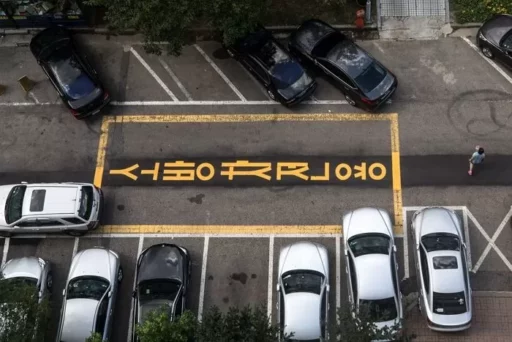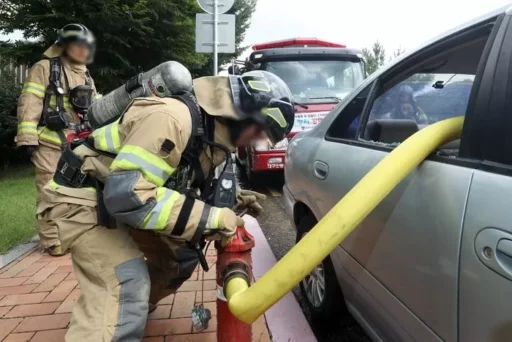Illegal Parking in Fire Truck Zones: 73 Violations Detected in One Apartment Complex
In Gwangju's Bukgu district, a significant number of illegal parking violations in fire truck zones were reported in an apartment complex, resulting in fines being imposed last year.
According to recent reports from Kyunghyang Shinmun and the Gwangju Bukbu Fire Station, a total of 73 violations were reported in this apartment complex last year. This figure accounts for 14.6% of the approximately 500 violations reported in Bukgu during the same period.
The problematic apartment complex, which received usage approval in 2023, consists of 907 units and is included in the designated obligation to install fire truck zones as per the Fire Services Act revised and implemented in August 2018.

Most of the reports were submitted by residents via the Safety Reporting app.
Maximum Fine of 1 Million Won for Violations in Fire Truck Zones
Parking in or placing items in fire truck zones can obstruct the entry of emergency vehicles in situations such as fires, making it extremely dangerous.
Current law imposes fines of 500,000 won for a first offense and 1 million won for subsequent offenses.
The tragic incident at the Jecheon Sports Center fire in 2017 prompted a revision of the law. During that fire, illegal parking delayed the entry of fire trucks by over 30 minutes, resulting in the loss of 29 lives.
However, the current legal application is limited to newly constructed apartment complexes, with only 43 out of 922 apartment complexes in Gwangju being subject to actual enforcement.

Challenges Faced by Firefighters and Need for System Improvement
Under current law, if deemed an emergency during fire suppression efforts, firefighters can forcibly move or damage illegally parked vehicles.
However, in older apartment complexes, parking itself is not considered a legal violation, leading to potential disputes with vehicle owners.
Firefighters are concerned that they may lose precious 'golden time' in emergencies due to these legal issues.
Experts emphasize the need to retroactively apply fire truck zone installation regulations to existing complexes.
While the installation of sprinklers is a costly burden, establishing designated zones is feasible with just paint, making retroactive application easier, according to experts.

Parking Around Fire Hydrants Also Subject to Fines
In addition to fire truck zones, parking near fire hydrants is also subject to fines.
The Road Traffic Act defines areas within 5 meters of fire hydrants as no-parking zones, with fines of 80,000 won for passenger vehicles and 90,000 won for vans for violations.
This is the second-highest level of fines after violations in children's protection zones, indicating significant risk and social cost.
Despite this, it is frequently observed that vehicles are parked right next to fire hydrants in urban areas.
Some drivers claim they do not perceive the act as illegal or state that there were no no-parking signs present.

However, if the area is designated with red pavement markings or no-parking signs, vehicles that are simply stationary in the area are still subject to fines.
How to Report Illegal Parking
Illegal parking can be easily reported through the 'Safety Reporting' app operated by the Ministry of the Interior and Safety.
After installing the app via Google Play or the App Store on a smartphone, users can select the 'Illegal Parking Report' menu.
Then, take two photos of the violating vehicle at the same location with a 1-5 minute interval, ensuring that the vehicle number and violation location are clearly visible.
Finally, complete the report by entering the details alongside the photos for submission.
Image source: Material photo to aid in understanding the article / gettyimagesbank


